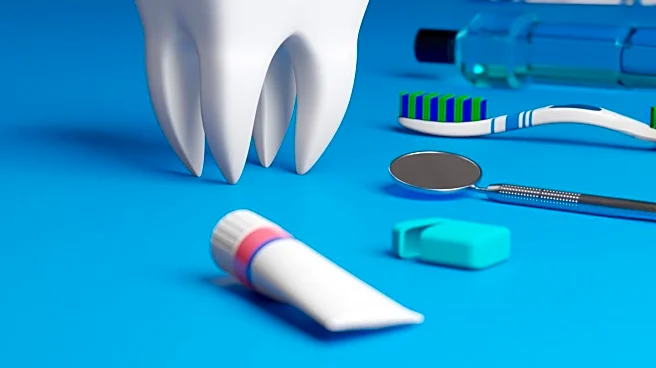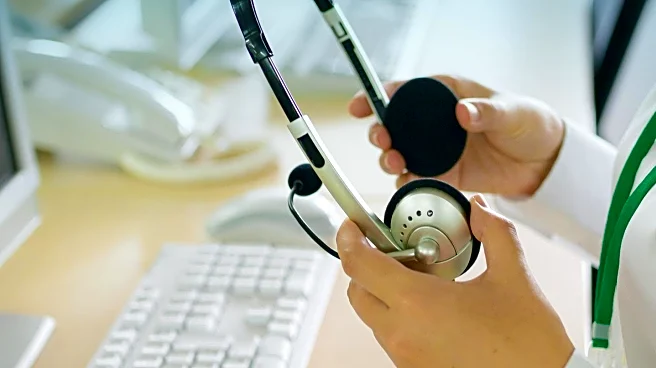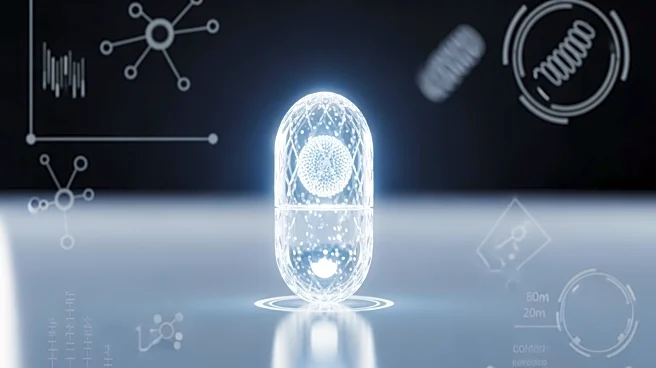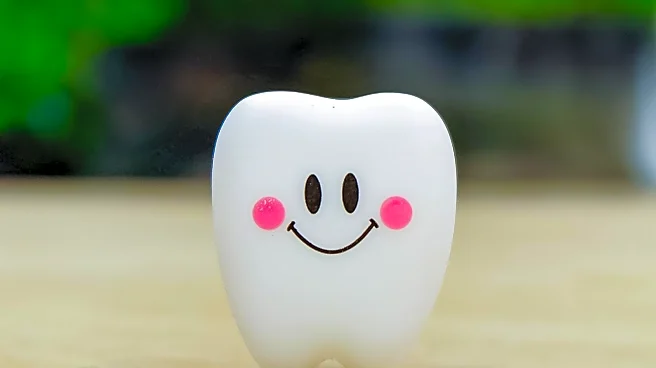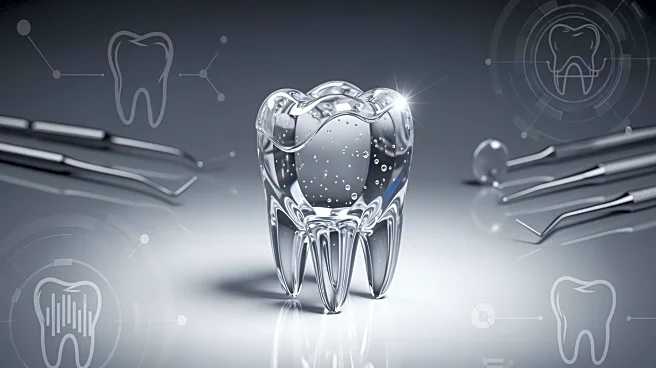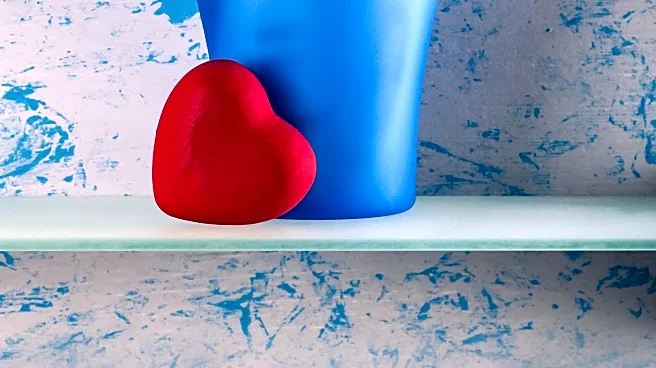What's Happening?
A new gel has been developed that uses chemicals found in saliva to repair and regenerate tooth enamel, potentially preventing cavities that require fillings. Enamel, the hard layer on the surface of teeth, does not naturally regenerate, leading to tooth decay
when it breaks down. The gel, created by Alvaro Mata and his team at the University of Nottingham, contains a modified protein that mimics amelogenin, a protein involved in enamel growth during infancy. Experiments show that the gel can create a robust layer on teeth, promoting the growth of new enamel crystals. Clinical trials are planned for early next year, with hopes to release a product by the end of 2026.
Why It's Important?
The development of this gel represents a significant advancement in dental care, offering a potential solution to the widespread issue of cavities. By restoring enamel, the gel could reduce the need for fillings and other dental procedures, improving oral health and reducing healthcare costs. This innovation could benefit millions of people who suffer from tooth decay, providing a non-invasive method to maintain dental health. Additionally, the gel's ability to regenerate enamel could lead to further research and development in dental treatments, potentially revolutionizing the industry.
What's Next?
Clinical trials are set to begin early next year to test the gel's effectiveness in humans. If successful, the product could be available to dentists by the end of 2026. The company Mintech-Bio, launched by Mata, aims to bring this product to market, potentially changing the landscape of dental care. The trials will determine the gel's safety and efficacy, and its success could lead to widespread adoption in dental practices.
Beyond the Headlines
The development of this gel highlights the importance of biomimicry in scientific research, using natural processes to solve human health issues. The gel's ability to mimic the natural growth of enamel could inspire similar approaches in other areas of medicine, promoting the use of biological systems in treatment development. This innovation also underscores the potential for interdisciplinary collaboration, combining materials science and biology to create effective healthcare solutions.
